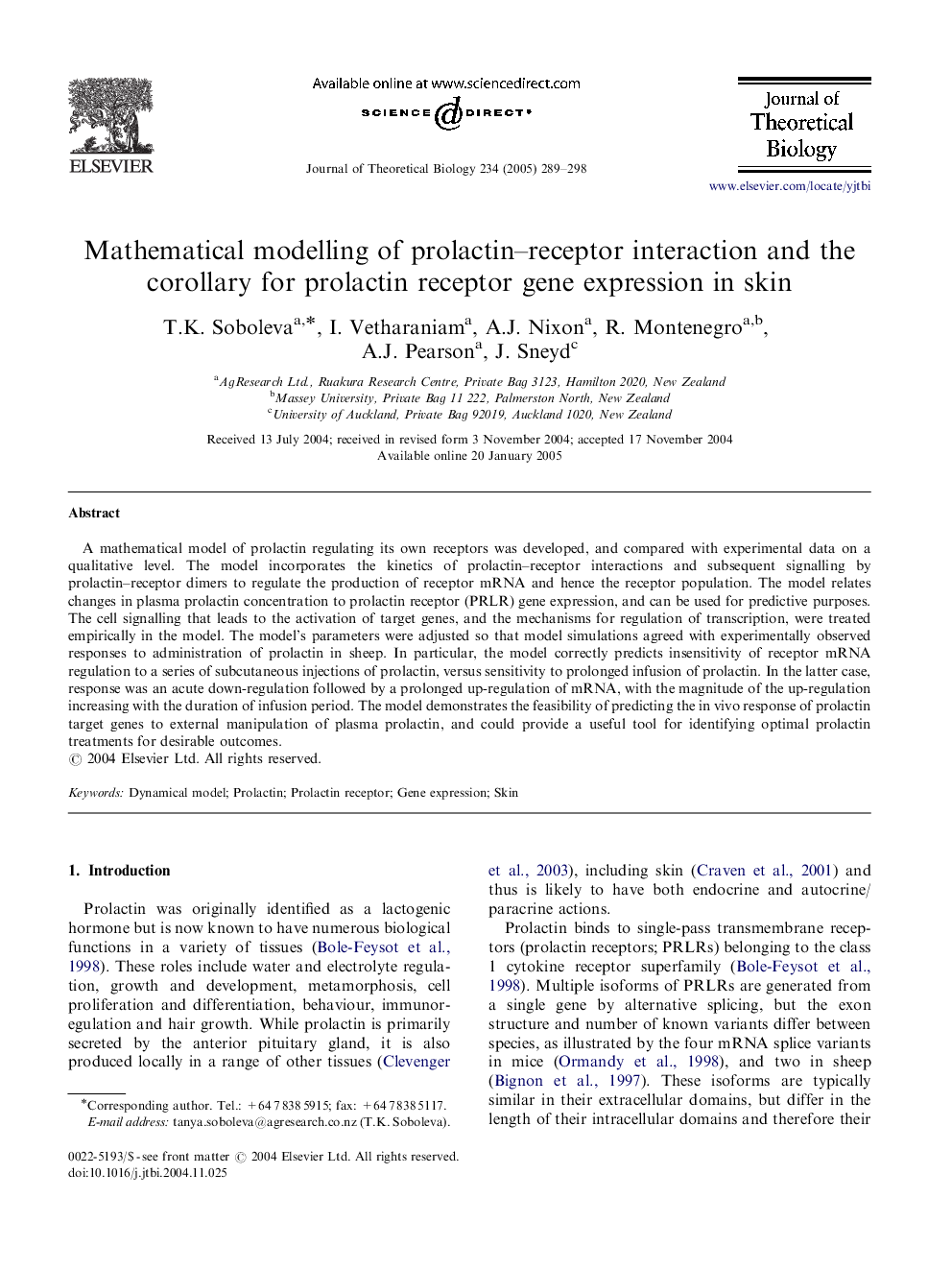| Article ID | Journal | Published Year | Pages | File Type |
|---|---|---|---|---|
| 9469604 | Journal of Theoretical Biology | 2005 | 10 Pages |
Abstract
A mathematical model of prolactin regulating its own receptors was developed, and compared with experimental data on a qualitative level. The model incorporates the kinetics of prolactin-receptor interactions and subsequent signalling by prolactin-receptor dimers to regulate the production of receptor mRNA and hence the receptor population. The model relates changes in plasma prolactin concentration to prolactin receptor (PRLR) gene expression, and can be used for predictive purposes. The cell signalling that leads to the activation of target genes, and the mechanisms for regulation of transcription, were treated empirically in the model. The model's parameters were adjusted so that model simulations agreed with experimentally observed responses to administration of prolactin in sheep. In particular, the model correctly predicts insensitivity of receptor mRNA regulation to a series of subcutaneous injections of prolactin, versus sensitivity to prolonged infusion of prolactin. In the latter case, response was an acute down-regulation followed by a prolonged up-regulation of mRNA, with the magnitude of the up-regulation increasing with the duration of infusion period. The model demonstrates the feasibility of predicting the in vivo response of prolactin target genes to external manipulation of plasma prolactin, and could provide a useful tool for identifying optimal prolactin treatments for desirable outcomes.
Related Topics
Life Sciences
Agricultural and Biological Sciences
Agricultural and Biological Sciences (General)
Authors
T.K. Soboleva, I. Vetharaniam, A.J. Nixon, R. Montenegro, A.J. Pearson, J. Sneyd,
